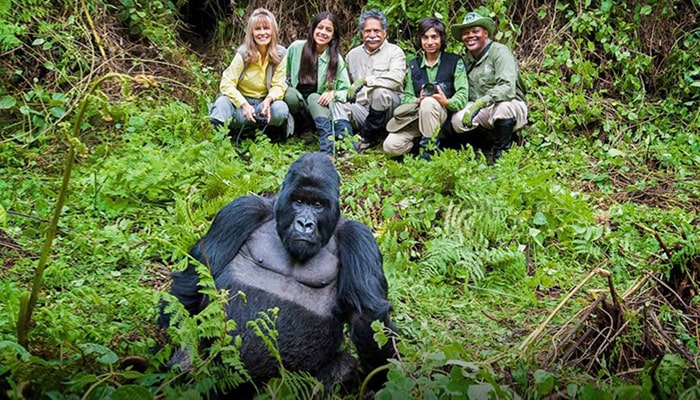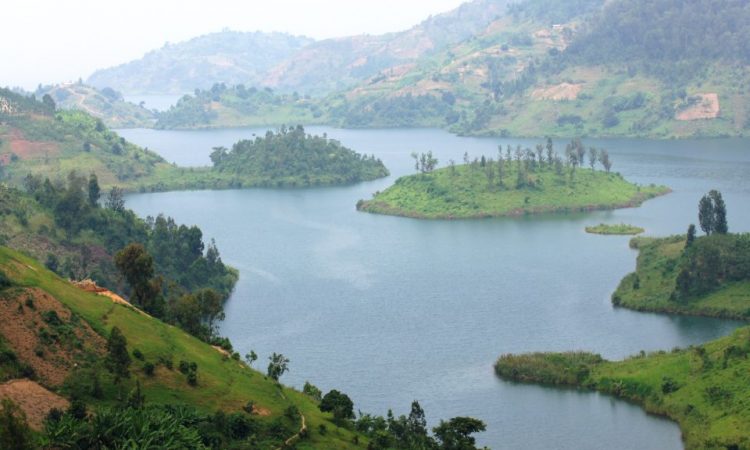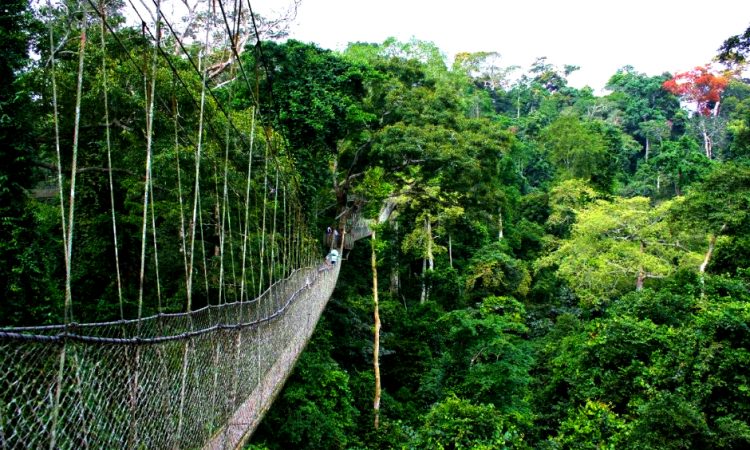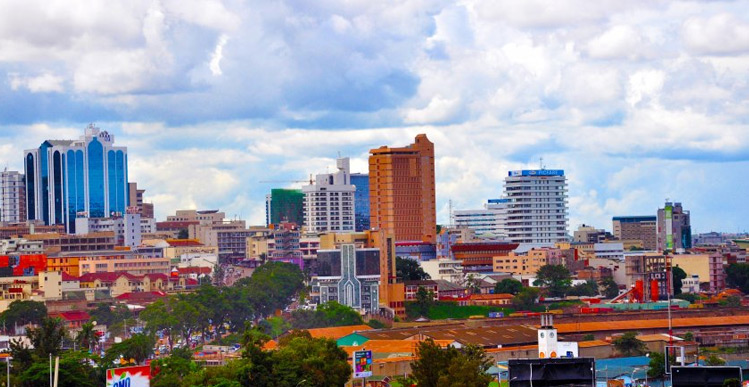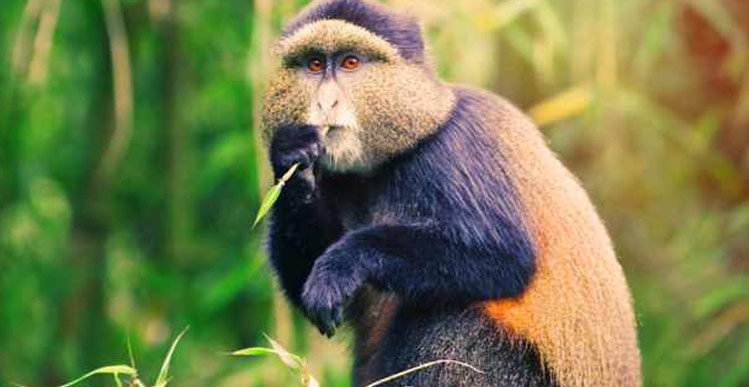Safari Attractions in Rwanda
Rwanda is a country located within Central and Eastern Africa with a population of approximately 12.3 million people. The capital city is Kigali. At 26,338 square kilometres (10,169 square miles), Rwanda is the world’s 148th largest country. Rwanda is bordered by Uganda to the north, Tanzania to the east, Burundi to the south, and the Democratic Republic of the Congo to the west. Rwanda is a landlocked country but has many lakes. Mountains dominate the centre and west, while the east consists of savannas, plains, and swamps. The population is young and predominantly rural. The principal language is Kinyarwanda, spoken by most Rwandans, while English and French are also official languages. The currency used is the Rwandan franc (RWF). Rwanda is a presidential republic based upon a multi-party system. The current President of Rwanda is President Paul Kagame. The Parliament consists of two chambers, and its role is to make legislation. The current constitution divides Rwanda into provinces (intara), districts (uturere), cities, municipalities, towns, sectors (imirenge), and cells (utugari), with each subdivision and its borders established by Parliament.
Rwanda’s economy has strengthened over the years and is on a growth path. The gross domestic product (GDP) growth for year 2018 was 8.2%, higher than the 7.8% expected growth, and is projected to grow by 7.2% n 2019. Rwanda has a clear vision for growth through private sector investment as set out under Vision 2020. The Vision is expected to transform Rwanda into a middle-income nation. To achieve this, the Vision identifies six interwoven pillars, including good governance and efficient state, skilled human capital, vibrant private sector, world class physical infrastructure, and modern agriculture and livestock all geared towards national, regional, and global markets. The National Strategy for Transformation (NST1) has been developed as an implementation instrument for the remainder of Vision 2010 and for the first four years of Vision 2050. It also integrates far-sighted, long-range global and regional commitments by embracing the Sustainable Development Goals (SDGs), the Africa Union Agenda 2063, and its First 10-Year Implementation Plan 2014-2023, as well as the East African Community (EAC) Vision 2050. The country provides an investor friendly climate coupled with well-functioning institutions, rule of the law, and zero tolerance for corruption. Rwanda has been cited as one of the fastest reforming countries in World Bank’s Doing Business report and was ranked second in Africa in Doing Business 2017. This was in recognition of radical reforms that the government has implemented in recent years to improve the business environment in the country.
Rwanda is a hub for rapidly integrating East Africa and a member of the EAC with a population of over 150 million people providing a common market and a customs union, where trade is envisaged to flow freely across Uganda, Tanzania, Rwanda, Burundi, and Kenya and further impact expected if the Democratic Republic of the Congo is admitted to the trading block. In addition, Rwanda is a member of the Common Market for Eastern and Southern Africa (COMESA). Rwanda also assumed leadership of the International Organisation of the Francophonie (OIF). Potential investment opportunities abound, particularly in the following sectors: infrastructure, which provides opportunities in rail and air transportation, which are intended to develop Rwanda as an EAC hub; agriculture, which is the backbone of the economy; and the energy sector, in areas of power generation via methane gas and hydro opportunities. There are also opportunities in tourism, especially in the area of conference tourism, and unique assets, such as mountain gorillas. Information and communications technology (ICT) is a priority sector under Vision 2020, and there are plans to develop a new ICT park. Other attractive sectors include financial services, exports, industrial manufacturing, energy, transport, and construction of low-cost housing. PwC Rwanda is one of the leading professional services firms in Rwanda, with over 70 professionals providing industry-focused assurance, tax, and advisory services. We offer Immigration Services to assist investors in Rwanda and multinational corporation assignees to Rwanda to acquire Rwandan work permits and visas. We have also developed a tailored tax compliance and advisory support service geared towards inbound investors in Rwanda.
PwC Rwanda offers a range of services to assist taxpayers with tax planning, compliance, revenue authority negotiations, and appeals. Our experienced team of tax advisers can assist with managing tax risk and minimising the tax burden by providing innovative and practical tax and business solutions in the areas of corporate, international, and indirect taxes; mergers and acquisitions; compliance; transfer pricing; and human resource services.
Best Time to Visit
The best wildlife-viewing months in Rwanda are during the Dry season, from June to September. Primate walks in the forest are a big part of any safari in Rwanda. The habitat of rainforests is, by default, very wet and one can’t avoid rain completely. Walking in the forest is easier in the Dry season and that is also the recommended time for most primate walks, including gorilla trekking. The exception is chimpanzee trekking in Nyungwe NP, which is in theory best in the Wet season, from October to February. The reason for this is because the chimps tend to migrate further in the Dry season when food is scarce.
Best Time June to September (Except for chimp trekking in Nyungwe Forest)
High Season June to September (Lodges might be full and gorilla permits must be booked long in advance)
Low Season March, April, October, November (These are the peaks of the rains)
Best Weather June to August (Least rain)
Worst Weather March and April (Most rain, forest trails are slippery)
June to September –Dry Season
Best time for gorilla trekking
Forest trails are less slippery
In Akagera NP, vegetation is less thick and animals gather around water sources, making wildlife easier to spot
Even during high season the parks don’t feel crowded
There is more sunshine
Gorilla permits need to be booked a long way in advance
Chimp trekking is better in the Wet season
October to May –Wet Season
- Savannah scenery is greener
- Possible low-season discounts
- Best season for chimp trekking
- Newborn animals in Akagera NP
- Forest trails become slippery and challenging
- Gorilla trekking departures leave as scheduled, even in heavy rain
Best Time to go to Rwanda by Major Park
Overall the parks are best visited in the Dry season, from June to September. Chimpanzee trekking in Nyungwe Forest is marginally better in the Wet season, but that advantage could be countered by the very slippery trails. General hiking and other primate walks are best in the Dry season.
Best Things To Do In Rwanda
The things to do in Rwanda are not many, but very unique. The country is long passed its war torn days and now is one of the safest countries to visit in Africa. I was blown away when I first arrived in the country because it didn’t feel like Africa at all, it felt like Germany. Unlike other Eastern Africa countries there is strict law and order, there isn’t any garbage on the streets, and lawns are manicured to impossible perfection. The country is extremely small and there is one thing that everyone knows you can do in Rwanda, gorilla trekking. I would implore you to get to know the people of the nation as they have been through very tumultuous times and have risen above that to create a very unique place in Africa. I will be sharing my Rwanda travel guides soon so stay tuned!
Kigali: Capital of Rwanda
A very unique city in the heart of Rwanda, Kigali is a gorgeous city with great weather. You can get a taste of history here by visiting the genocide memorials and learn about the turbulent past of the country. While I lived in Kenya & Ethiopia while I was living overseas in Africa, after visiting Rwanda you could definitely settle down here. The internet is also reliable as I was able to day trade from the capital.
Gorilla Trekking
Most people think that the only thing to do in Rwanda is to see the Gorillas. A very unique experience when you can get inches away from Gorillas is something that you can’t put a price on. The largest group of gorillas are in Uganda but you can also have a great experience in Rwanda. I chose Uganda, check out my travel blog for stories of my trip!
National Parks
A Rwanda tourist attractions list wouldn’t be right without adding the list of national parks in the country. Rwanda is a host to a great variation of animals aside from gorillas including chimpanzees and a variety of birds as well. Some of the popular parks are Akagera and Nyungwe.
Lake Kivu
Part of the Great Rift Valley, Lake Kivu is the border between Rwanda & DR Congo. A great relaxing region where tourists are safe to visit and swim (ask locals where) and its also extremely picturesque. Make sure that you try to visit cities like Kibuye and Gisenye near the DR Congo border.
Butare (Huye)
This is the cultural hub for the country and was once the most important city before 1965. Here you will find a great national museum that will show the great history of Rwanda and also it’s entrance into the modern world. Visit the nearby Nyabisindu (Nayanza) where you can find the impressive royal palace of Rwanda’s fuedal monarchy.
Rwanda is a landlocked country in Central Africa. The official name of the country is the Republic of Rwanda. It is bordered by the Democratic Republic of the Congo to the west, Uganda to the north, Tanzania to the east, and Burundi to the south
Rwanda has four official languages: English, French, Kinyarwanda and Swahili. As of 1 January 2017, the population of Rwanda was estimated to be 12,033,749 people. It is the 145th largest country in the world in terms of land area with 26,338 square kilometers (10,169 square miles). Kigali is the capital and largest city of Rwanda. It is near the nation’s geographic center. The city is Rwanda’s economic, cultural, and transport hub.
The landscape is reminiscent of a tropical Switzerland. Its dominant feature is a chain of mountains of rugged beauty that runs on a north-south axis and forms part of the Congo-Nile divide. The entire country is at a high altitude: the lowest point is the Rusizi River at 950 meters (3,117 feet) above sea level. Mount Karisimbi is an inactive volcano in the Virunga Mountains It is the highest mountain in Rwanda rising to a height of 4,507 meters (14,787 feet) above sea level.
The network of protected areas in Rwanda covers about 9% of the national territory. It is made up of 3 national parks, plus other types of protected areas. Volcanoes National Park lies in northwestern Rwanda. The national park is known as a haven for the rare and endangered mountain gorilla and golden monkeys. It is home to five of the eight volcanoes of the Virunga Mountains (Karisimbi, Bisoke, Muhabura, Gahinga and Sabyinyo), and spans 160 square kilometers (62 square miles) covered in rainforest and bamboo.
Akagera National Park covers 1,200 square kilometres (460 square miles) in eastern Rwanda, along the Tanzanian border. It was founded in 1934 to protect animals and vegetation in three ecoregions: savannah, mountain and swamp. The park is named for the Kagera River which flows along its eastern boundary feeding into several lakes the largest of which is Lake Ihema.

